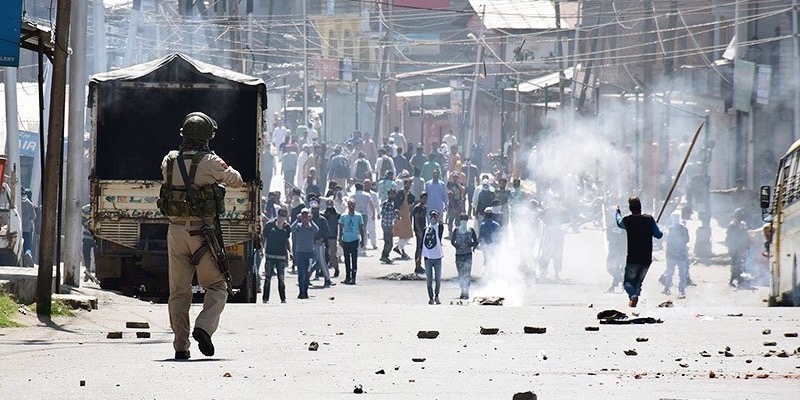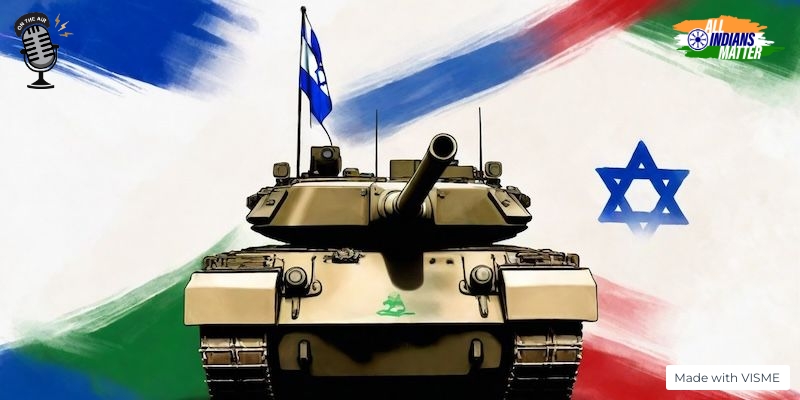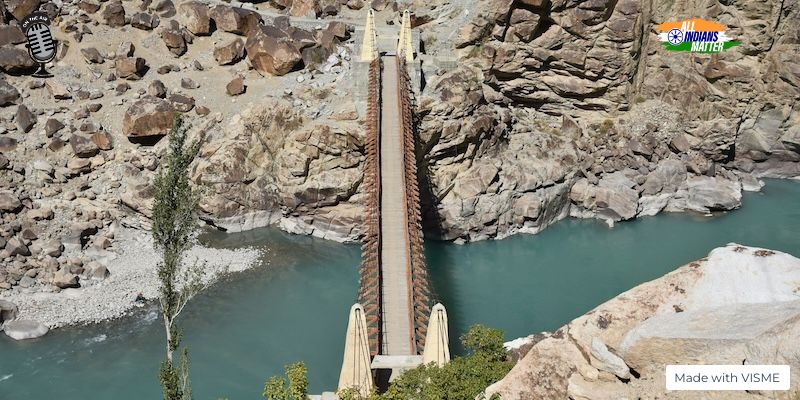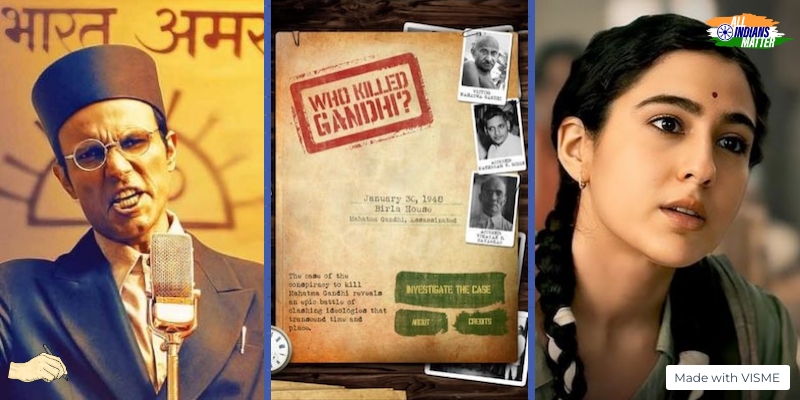This is the first of a three-part series on communal strife and hate crimes in India. The series will comprise two columns and a podcast.
Tushar Gandhi
February 22, 2021
It’s been 73 years since Mahatma Gandhi was murdered by a fanatic. Bapu’s last words are commonly thought to be “He, Ram” although what he chanted as he left his body was a diminishing “Ram, R… a… m, R…….. a………. m”. But ‘He, Ram’ is what is inscribed on the memorials at Gandhi Smriti and Raj Ghat and those words have become synonymous with his death.
Since Independence, there have been too many incidents of hate. If Bapu was alive, they would have led him to lament “Ram…., R.. a.. m, R…… a…… m” over and over again.
“Naked violence repels like the naked skeleton, shorn of flesh, blood and the velvety skin. It cannot last long. But it persists fairly long when it wears the mask of peace and progress, so called.”
Gandhi, Young India, February, 1930
I have listed major communal and caste violence incidents since 1946 till date. There have been many more such major and minor incidents, and this list does not claim to be comprehensive. I am thankful to my daughter Kasturi and son Vivan for researching and compiling this list of our nation’s collective shame.
Communal and caste massacres are not new in India. The Moplah riots in the Malabar region of Kerala and the massacres that followed were ghastly. Closer to Independence, in August 1946, savagery was unleashed when the Muslim League organised and executed Direct Action Day to force the creation of Pakistan. The Great Calcutta Killings were barbaric – the backlash to Direct Action. Killings of Hindus were followed by an even more savage massacre of Muslims. This, in turn, resulted in the massacre of Hindus in Noakhali and Tipperrah districts of East Bengal, now Bangladesh. A reprisal massacre of Muslims in Bihar followed. All this time, Punjab was burning too.
Bapu jumped into the inferno in East Bengal and then Bihar to douse the flames. He barely succeeded. I say barely since the inferno was spreading to other regions of a nation on the verge of independence.
Post-Independence, Calcutta again erupted in an orgy of violence. It took a fast by Bapu to restore sanity. Punjab and West Pakistan were engulfed in an inferno of savagery, the flames threatening to consume Delhi. Humanity was being barbarically slain everywhere.
In the last month of his life, 78-year-old Bapu once again went on a fast to restore sanity. Soon after he succeeded, he was murdered by the ideology that practises the doctrine of hate. The shock of Bapu’s murder and the nationwide grief it caused helped restore sanity for a while. But then again we succumbed to prejudice and from time to time resorted to insanity.
There were major communal incidents and several more that were not considered significant but which also extracted a dear cost. Although caste brutalities and crimes have become part of our nature, there have been incidents that are considered to be major.
In recent times, lynch mobs have become the new vigilantes. There have been many lynchings and the murderers have gotten away by merging into an amorphous mob. Too little has been done to punish the perpetrators. Justice has been delayed to such an extent that when delivered it is of little consequence. A large segment of society openly venerates the killers and the silent majority remains silent.
My ‘He, Ram!’ List
1960s
1961: Hindu-Muslim riots in Jabalpur, Madhya Pradesh. Then again in Aligarh, Uttar Pradesh. In October, they spread to Meerut, Calcutta, Jamshedpur, Bihar, Rourkela, Orissa
1964: Communal violence in Malegaon, Maharashtra
1967: Hindu-Muslim riots in Ranchi
1968: Riots in Karimganj, Assam, claim many lives
1969: Ahmedabad burns
1970s
1970: Bhiwandi in western Maharashtra witnesses communal riots
1974: Communal riots in Sadar Bazaar, New Delhi, in May
1977: Hindu-Muslim riots in Varanasi in October
1978: Hindu-Muslim riots in Sambhal, Uttar Pradesh, in March and Hyderabad in April
1979-80: Hindu Muslim riots in Jamshedpur, Aligarh, Moradabad
1980s
1980-81: Several riots in Godhra, Gujarat
1981: Communal riots in Biharsharif in April. In Hyderabad in July
1982: Hindu-Muslim riots place in Pune and Solapur, Maharashtra, in February; 16 Sadhus and a sadhvi burnt alive in Bijon Sethu, West Bengal, in April
September-October 1982: Hindu-Muslim riots in Meerut. Also in Baroda, Gujarat, in October
1983: Communal violence in Nellie, Assam, in February. In Hyderabad in September
1984: Bhiwandi and Malegaon burn. Hyderabad once again in July and September. In October-November, genocide of Sikhs after Prime Minister Indira Gandhi’s assassination
1985: Communal riots in Ahmedabad
1987: Riots engulf Meerut
1988: Hindu-Muslim Riots in Aurangabad, Maharashtra, in May. In Muzaffarnagar in October
1989: Protests by Muslim organisations against Salman Rushdie’s book ‘Satanic Verses’ turn violent in Mumbai in February. In September, Hindu-Muslim riots in Badaun, Uttar Pradesh. In October, communal riots in Indore, Madhya Pradesh. In Bhagalpur, reports of police atrocities against Muslims emerge
1989: Killings orchestrated by separatist leaders force Kashmiri Pandits out of the valley
1989: Hindu-Muslim riots in Badaun and Colonelganj, Uttar Pradesh
1990s
1990: LK Advani, Bharatiya Janta Party leader, embarks on a divisive rath yatra from Somnath to Ayodhya to force the building of a Ram temple. Communal riots break out everywhere he goes. Mobs of kar sevaks try to attack the Babri Masjid; more than 60 are killed in police firing. Riots break out in many cities. In October, there are riots in Karnataka’s Ramnagram, Channapatna, Kolar, Davangere and Tumkur. That same month, an attack on a Hindu Ram Jyoti procession in Udaipur results in riots in Udaipur and Jaipur.
1991: Hindu-Muslim riots in Saharanpur, Uttar Pradesh. Anti-Tamil riots in Karnataka over sharing of Kaveri waters; retaliatory violence follows in Tamil Nadu
1992: Riots in Sitamarhi, Bihar, as well as Surat, Gujarat. On December 6, kar sevaks and their allies demolish the Babri Masjid. The BJP top brass watches and some even egg on the mob. Communal violence breaks out across India. The wounds inflicted are still festering
1992-1993: Mumbai witnesses two rounds of brutal communal violence and pogroms against Muslims by the Sangh and Shiv Sena goons, assisted by a highly communalised police force. Riots also break out in Gujarat, Karnataka, Uttar Pradesh, Assam, Rajasthan, West Bengal, Madhya Pradesh
1999: Australian Missionary Graham Stuart Staines and his two sons, Philip (10) and Timothy (6), are burnt alive in their van in Keonjhar, Odisha, by a Bajrang Dal mob led by Dara Singh
2000s
2002: The burning of a bogey of the Sabarmati Express at Godhra results in the death of several kar sevaks returning from Ayodhya. A ghastly massacre and rapes of Muslims follow in Gujarat. Mobs attack Muslim settlements while the police watch. In Gulbarg Society, senior Congress leader and former MP Ehsan Jafri is burnt alive. Police do nothing despite pleas for help
2006: Serial blasts in Malegaon carried out by Hindu fanatics
2007: Hindu-Christian riots in Kandhamal, Odisha
2008: Hindus attack Christians in Kandhamal
2012: Bodo-Bengali Muslim riots in Assam
2013: Hindu-Muslim riots in Muzaffarnagar
2016: Hindu-Muslim Riots in Malda, West Bengal
2017: Hindu-Muslim riot in Baduria, West Bengal, in July. In August, there are riots in Haryana, Punjab, Uttar Pradesh, Rajasthan and Delhi, by followers of Gurmeet Ram Rahim of the Dera Sachcha Sauda after he is convicted in a rape case
2020: Hindu-Muslim riots engineered to derail anti-Citizenship Amendment Act protests in New Delhi
Caste atrocities and violence
1971-76: Caste wars in Bhojpur, Bihar
1981: Dacoit Phoolan Devi guns down 20 Thakur men in Behmai, Uttar Pradesh, to avenge her rape. Phoolan is murdered in Delhi in 2001 by Sher Singh Rana, a Thakur, to avenge the murders
1982: Caste conflict in Gaini, Bihar
1983: Yadav-Kurmi clashes in Munger and Patna, Bihar
1985-1992: Caste wars between Yadavs and Rajputs in Bihar
1996: Massacres of Dalits by Ranveer Sena in Bihar
1999: Massacre by Ranveer Sena at Shankarbigha, Bihar
2000: Afsar Massacres involving Bhumihars and Kurmis in Nawada and Sheikh Purabner
2006: Massacre of a Dalit family in Khairlanji, Maharashtra
2015: Atrocities against Dalits in Sanpedh, Haryana
2016: 7 members of a Dalit family are flogged by upper caste cow vigilantes in Una, Gujarat
2018: Upper caste fanatics attack a commemorative celebration by Dalits at Bhima Koregaon, Maharashtra. Eight-year-old Muslim girl abducted, raped repeatedly and murdered in Kathua, Jammu
2020: 19-year-old Dalit girl gangraped and murdered by four upper caste men in Hathras, Uttar Pradesh
Lynchings by cow vigilantes and mobs
2006: Muslim mob lynches police constables in Bhiwandi
2015: Mohammad Akhlaq dragged out of his home in Dadri, Uttar Pradesh, and beaten to death on the suspicion of having beef in his home. Police Inspector Subodh Kumar Singh, investigating officer of the case, murdered by vigilantes in Bulandshahr
2016: In Mewat, Haryana, a woman and her minor cousin beaten and gangraped after being accused of eating beef. Two other family members murdered
2017: In April, Pehlu Khan lynched by cow vigilantes in Alwar, Rajasthan. In June, officers of the Animal Husbandry Department in Tamil Nadu brutally beaten by cow vigilantes. Zafar Khan lynched in Pratapgarh, Rajasthan, while stopping municipal officials from photographing homeless women defecating in the open. Hafiz Junaid lynched on a train between Okhla and Asoti in Haryana
2019: In April, Shaukat Ali of Biswanath Chariali, Assam, savagely beaten and force-fed Pork on suspicion of carrying beef. Tabrez Ansari lynched by a Hindu Mob in Jharkhand. Mazlum Ansari and Imtiaz Khan lynched by cow vigilantes in Latehar district, Jharkhand
2020: Mob Lynches two sadhus in Palghar
Other victims of fanatics who believe in the ideology of Gandhi’s murderers
2013: Social activist and rationalist Dr Narendra Dabholkar
2015: Left-wing politician and author Govind Pansare in Kolhapur. Also scholar MM Kalburgi in Dharwad
2017: Journalist Gauri Lankesh in Bengaluru
Several whistleblowers have been murdered by those they exposed.
Many more incidents of communal killings and caste atrocities have occurred, too many to enumerate. In all incidents, fanatics perpetrate the crime and in most cases they get away with it. It’s the innocent who are the victims.
In 1948, Bapu was murdered. In death, he saved us from our inherent insanity but it did not last long. Soon we were back to our true nature.
Hate has become the creed of new India, a means to power. Unfortunately, Bapu isn’t coming back to save us.
This ‘He, Ram’ list seems apt as another anniversary of Bapu’s martyrdom passes. “Ram, R… a… m, R…….. a……… m.”
If you’re interested in reading more about this, please go to the following links:
- https://www.sciencespo.fr/
mass-violence-war-massacre- resistance/en/document/hindu- muslim-communal-riots-india-i- 1947-1986.html - https://www.hindustantimes.
com/india/chronology-of- communal-violence-in-india/ story-jJtcgvxFYh5N3jhSw7H4KN. html - https://www.hindustantimes.
com/india/caste-war-role-of- private-armies/story- Ujk1jr7eWeUZ8TP8Y4CxOK.html - Detailed caste wars: https://www.satp.org/
satporgtp/countries/india/ terroristoutfits/massacres.htm - Caste-based violence cases: https://en.wikipedia.org/
wiki/Category:Caste-related_ violence_in_India - https://en.wikipedia.org/wiki/
List_of_massacres_in_Bihar - https://www.hindustantimes.
com/india-news/86-killed-in- cow-related-violence-since- 2010-are-muslims-97-attacks- after-modi-govt-came-to-power/ story-w9CYOksvgk9joGSSaXgpLO. html - Delhi violence – https://www.thehindu.com/
topic/delhi-violence-2020/
Tushar Gandhi, great grandson of the Mahatma, is an activist, author and president of the Mahatma Gandhi Foundation. Reach him here: gandhitushar.a@gmail.com.
Cover picture: Wikimedia Commons






